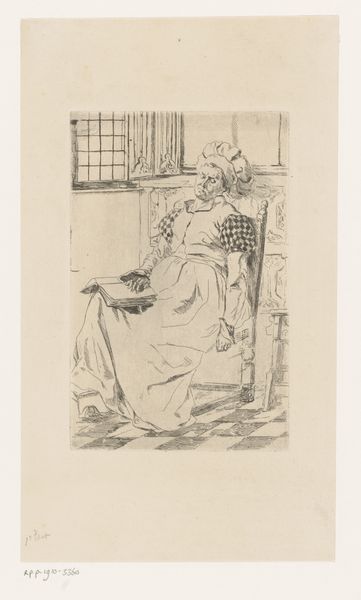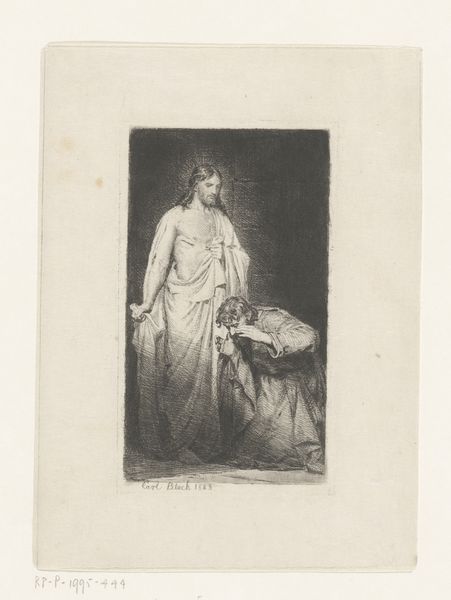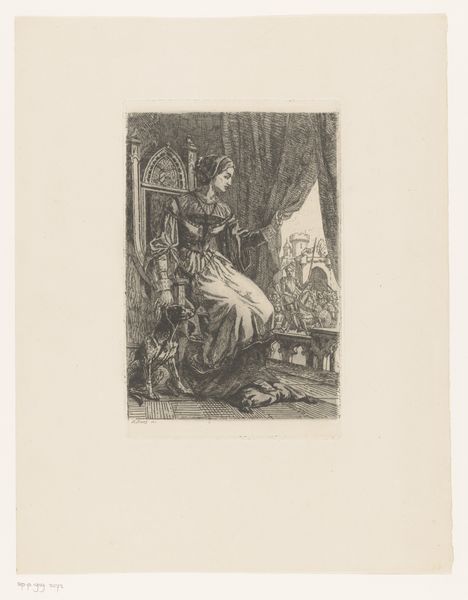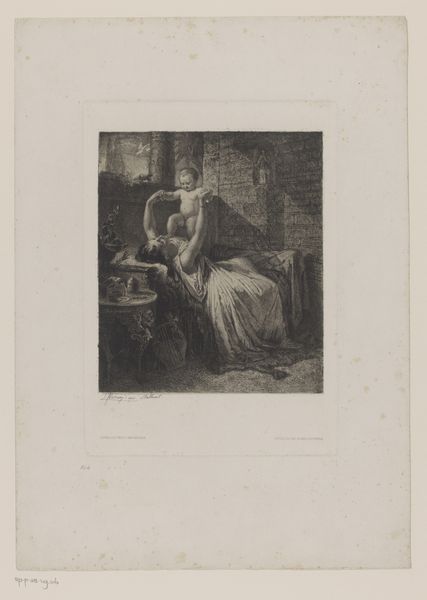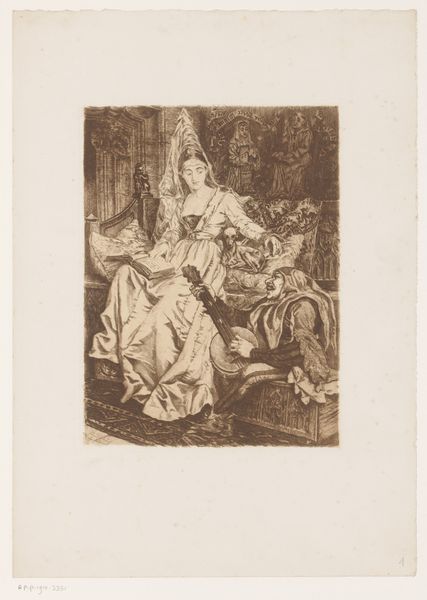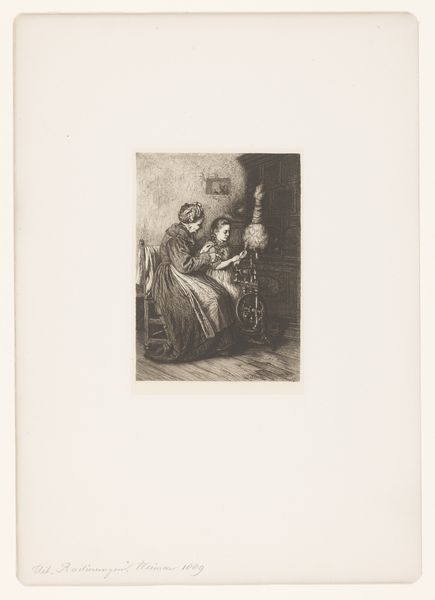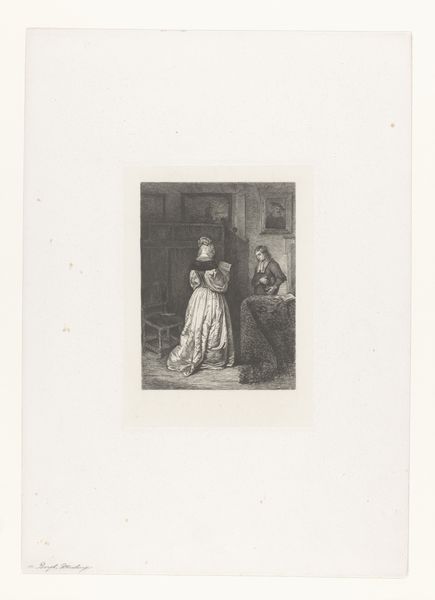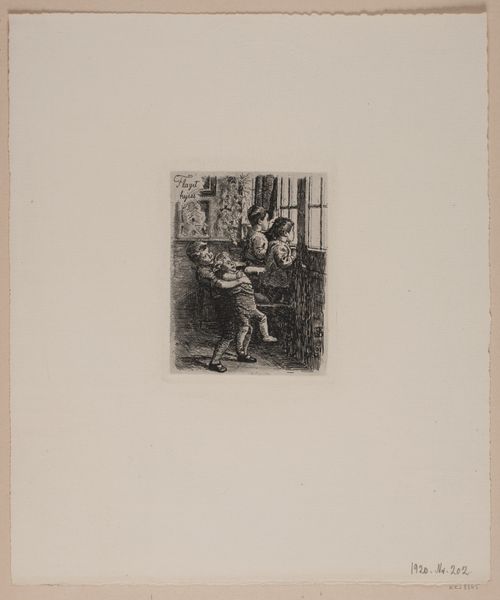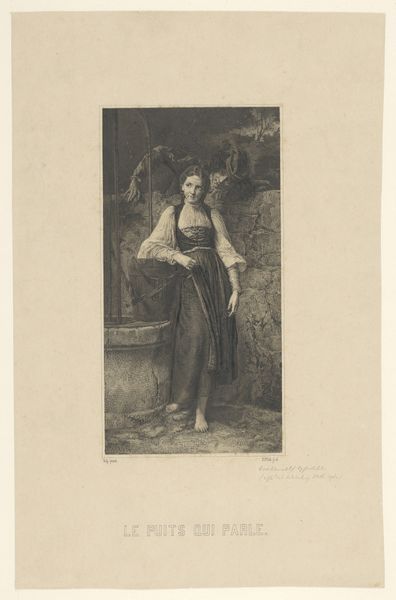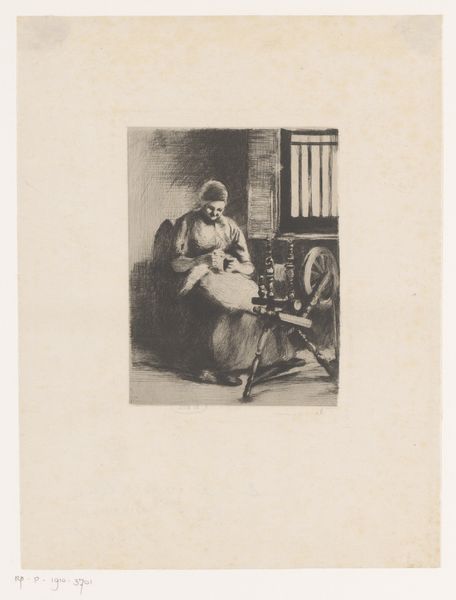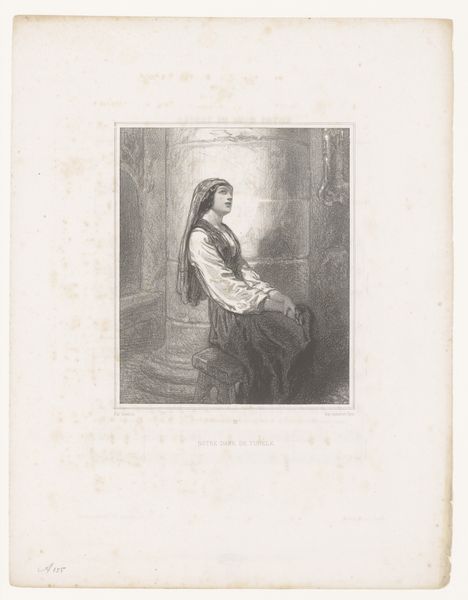
drawing, print, etching, paper
#
portrait
#
drawing
# print
#
etching
#
paper
#
genre-painting
#
realism
Dimensions: height 181 mm, width 118 mm
Copyright: Rijks Museum: Open Domain
Curator: Before us, we have "Slapende vrouw op een stoel met boek op schoot", which translates to "Sleeping woman in a chair with book on lap", a compelling print by Willem Geets created between 1848 and 1910. Editor: My immediate reaction is one of exhaustion, frankly. You can almost feel the weight of the book in her lap and the fatigue in her posture. The etching, though finely detailed, is cast in shadows that create a very heavy mood. Curator: It's important to remember that prints like these played a significant role in disseminating images and narratives to a wider public. How do you think an image like this contributed to social or political discourse at the time? Editor: I think genre scenes like this gave rise to questions around labour and rest, or access to education, particularly for women of this period. Are we meant to see this woman as burdened, oppressed, or perhaps as merely finding a moment's peace within the constraints of her social role? Her clothing and the modest interior indicate a life of perhaps quiet labour. Curator: Indeed. And when viewing this artwork through a modern, feminist lens, we may observe more profoundly on gender roles. Are women of the period afforded intellectual opportunities? The act of slumber over a book can be observed from a place of exhaustion, perhaps pointing to a disparity of the opportunities awarded to her within society at large. Editor: The use of etching is particularly evocative here. The dense cross-hatching creates a tangible sense of texture – you can practically feel the fabric of her dress, yet this woman’s dream is less accessible for interpretation, and perhaps open for interpretation. It's interesting how a mass-produced medium can still evoke such intimacy and raise complex questions. What do you take away from its public display today? Curator: I see how the artwork raises crucial discussion regarding cultural production within art and its reception. I feel empowered and enlightened to have the privilege to see how this medium engages in themes around societal inequalities across intersections. Thank you for enlightening our understanding. Editor: A pleasure. It's always enriching to reconsider these works and discover how they converse with both the past and present.
Comments
No comments
Be the first to comment and join the conversation on the ultimate creative platform.
